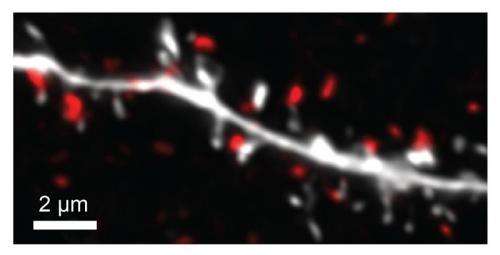Learning brakes in the brain

A brain capable of learning is important for survival: only those who learn can endure in the natural world. When it learns, the brain stores new information by changing the strength of the junctions that connect its nerve cells. This process is referred to as synaptic plasticity. Scientists at the Max-Planck Institute for Brain Research in Frankfurt, working with researchers from Basel, have demonstrated for the first time that inhibitory neurons need to be at least partly blocked during learning. This disinhibition is a bit like taking the foot off the brake in a car: if the inhibitory neurons are less active, learning is accelerated.
Learning is often a matter of timing: different stimuli become strongly associated if they occur in close succession. The Max Planck scientists made use of this phenomenon in conditioning experiments in which mice learned to react to a tone. For this learning effect to occur, the synapses of the so-called principal neurons in the amygdala need to become more sensitive. The researchers concentrated on two types ofinhibitory neuronswhich produce the proteins parvalbumin and somatostatin and inhibit the principal neurons of the amygdala.
马克斯·普朗克研究人员获得的结果show that both cell types are inhibited during different phases of the learning process. This disinhibition enhances the activation of the principal neurons. Moreover, the scientists were able to control the learning behaviour of the mice through the use of optogenetics. In these experiments, they equipped both types of inhibitory neurons in the amygdala with light-sensitive ion channels, allowing them to use light to switch the neurons on or off as required. "When we prevent disinhibition, the mice learn less well. In contrast, enhancing the disinhibition leads to intensified learning", says Johannes Letzkus from the Max Planck Institute for Brain Research. Next, the scientists aim to identify the nerve pathways which are involved in disinhibition.
Explore further













